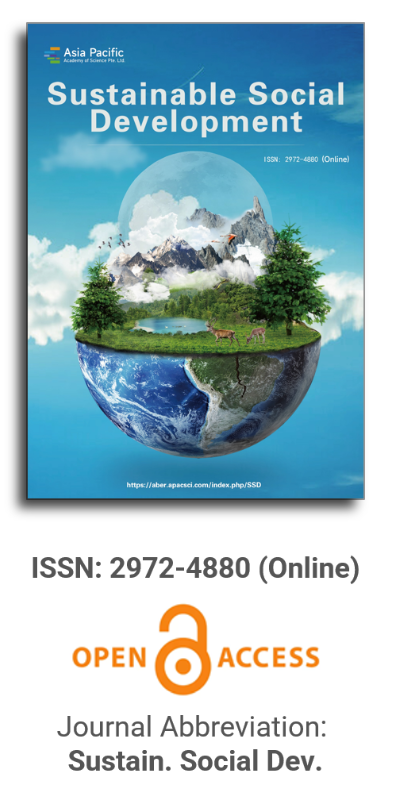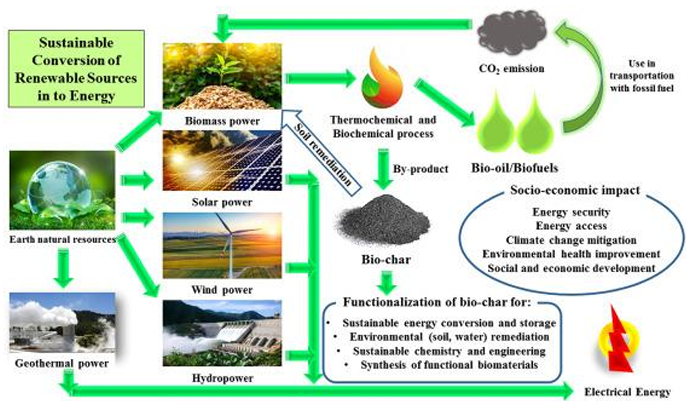
Asia Pacific Academy of Science Pte. Ltd. (APACSCI) specializes in international journal publishing. APACSCI adopts the open access publishing model and provides an important communication bridge for academic groups whose interest fields include engineering, technology, medicine, computer, mathematics, agriculture and forestry, and environment.

Economic analysis of biogas production from pineapple waste as alternative source of energy in a pineapple processing plant, case of Del Monte Kenya Limited
Vol 1, Issue 2, 2023
Download PDF
Abstract
This paper evaluates the economic aspect of utilizing biogas from pineapple waste as a source of energy in a pineapple processing plant, in the in the case of Del Monte Kenya Limited (DMKL). Del Monte Kenya Limited, a known exporter of canned pineapple, lies on approximately 10,000 acres of pineapple plantations. The company’s processing capacity of 100,000 tons of pineapple annually produces approximately 23,000 tons of pineapple waste per year. Currently, these wastes are sold to local farmers as animal feed at $20 per ton. A study was conducted at Jomo Kenyatta University of Agriculture and Technology (JKUAT) that revealed that a ton of pineapple waste has the potential to generate 7.41 m3/day of biogas. A cost-comparative analysis was conducted between employing an anaerobic digester to treat pineapple wastes to generate biogas for usage within the plant and selling the waste to locals for feeding the livestock. The results revealed that it is more economical to use waste to generate biogas as an alternative source of energy in the processing lines. The net present value (NPV) of $1,939,019, an internal rate of return (IRR) of 16%, and a payback period of 4 years were estimated. The positive value of NPV shows that the project is viable.
Keywords
References
- Kola W, Sikalieh D. The influence of organizational culture on change management in the energy sector. Available online: https://pdfs.semanticscholar.org/356f/c0bc975215bf423b664b673db6f1a3587b13.pdf (accessed on 18 September 2023).
- Welfle A, Chingaira S, Kassenov A. Decarbonising Kenya’s domestic & industry Sectors through bioenergy: An assessment of biomass resource potential & GHG performances. Biomass and Bioenergy2020; 142: 105757. doi: 10.1016/j.biombioe.2020.105757
- Laichena JK, Wafula JC. Biogas technology for rural households in Kenya. OPEC Review1997; 21(3): 223–244. doi: 10.1111/j.1468-0076.1997.tb00009.x
- Kigo BW. Renewable Energy as a Catalyst to Reduction in Carbon Emissions and Sustainable Development in Kenya [Bachelor’s thesis]. University of Nairobi; 2014.
- Fox LM, Liebenthal RB. Attacking Africa’s Poverty: Experience from the Ground. World Bank Publications; 2006.
- Ndungu S. A Report on Conventional Pineapple Production in Kenya. Swedish Society for Nature Conservation (SSNC), Sweden; 2014.
- Department for the Environment, Transport and the Regions. Multi-Criteria Analysis: A Manual. Communities and Local Government Publications; 2009.
- Yang X, Liu Y, Thrän D, et al. Effects of the German Renewable Energy Sources Act and environmental, social and economic factors on biogas plant adoption and agricultural land use change. Energy, Sustainability and Society 2021; 11: 6. doi: 10.1186/s13705-021-00282-9
- Kulkarni I, Zang JW, Leandro WM, et al. Closed-loop biodigesters on small-scale farms in low-and middle-income countries: A review. Water 2021; 13(19): 2744. doi: 10.3390/w13192744
- Lam J, ter Heegde F. Domestic Biogas Compact Course: Technology and Mass-Dissemination Experiences from Asia. University of Oldenburg; 2011.
- Ogrodowczyk D, Olejnik TP, Kaźmierczak M, et al. Economic analysis for biogas plant working at sugar factory. Biotechnology and Food Sciences 2016; 80(2): 129–136.
- Wang CB, Zhang LX. Life cycle assessment of carbon emission from a household biogas digester: Implications for policy. Procedia Environmental Sciences 2012; 13: 778–789. doi: 10.1016/j.proenv.2012.01.071
- Ayedun H, Adeyemo AI, Ayadi PO. Biogas production from poultry waste modified with sawdust. Science World Journal 2023; 18(2): 254-258. doi: 10.4314/swj.v18i2.12.
- Cheng S, Li Z, Mang HP, et al. Application of fault tree approach for technical assessment of small-sized biogas systems in Nepal. Applied Energy 2014; 113: 1372–1381. doi: 10.1016/j.apenergy.2013.08.052
- Nzila C, Dewulf J, Spanjers H, et al. Multi criteria sustainability assessment of biogas production in Kenya. Applied Energy2012; 93: 496–506. doi: 10.1016/j.apenergy.2011.12.020
- Behzadi A, Houshfar E, Gholamian E, et al. Multi-criteria optimization and comparative performance analysis of a power plant fed by municipal solid waste using a gasifier or digester. Energy Conversion and Management 2018; 171: 863–878. doi: 10.1016/j.enconman.2018.06.014
- Jena SP, Mishra S, Acharya SK, Mishra SK. An experimental approach to produce biogas from semi dried banana leaves. Sustainable Energy Technologies and Assessments 2017; 19: 173–178. doi: 10.1016/j.seta.2017.01.001
- Mukawa J, Pająk T, Rzepecki T, Banaś M. Energy potential of biogas from sewage sludge after thermal hydrolysis and digestion. Energies 2022; 15(14): 5255. doi: 10.3390/en15145255
- Salomon KR, Lora EES, Rocha MH, del Olmo OA. Cost calculations for biogas from vinasse biodigestion and its energy utilization. Sugar Industry 2011; 136(4): 217–223. doi:10.36961/si11311
- Kabeyi MJB, Olanrewaju OA. Development of a biogas plant with electricity generation, heating and fertilizer recovery systems. In: Proceedings of the 2nd African International Conference on Industrial Engineering and Operations Management; 7–10 September 2020; Harare, Zimbabwe. pp. 146–159.
- Fachagentur Nachwachsende Rohstoffe. Biogas Baseline Data for Germany as of October 2008 (German). Fachagentur Nachwachsende Rohstoffe; 2009.
- Hua W, Luo P, An N, et al. Manure application increased crop yields by promoting nitrogen use efficiency in the soils of 40-year soybean-maize rotation. Scientific Reports 2020; 10(1): 14882. doi: 10.1038/s41598-020-71932-9
- Grizane T, Jurgelane-Kaldava I. Tourist transportation generated carbon dioxide (CO2) emissions in Latvia. Environmental and Climate Technologies 2019; 23(3): 274–292. doi: 10.2478/rtuect-2019-0095
- Wang Y, Corson C. The making of a ‘charismatic’ carbon credit: Clean cookstoves and ‘uncooperative’ women in western Kenya. Environment and Planning A: Economy and Space 2015; 47(10): 2064–2079. doi: 10.1068/a130233p
- Al-Maghalseh M. Techno-economic assessment of biogas energy from animal wastes in central areas of Palestine: Bethlehem perspective. International Journal of Energy Applications and Technologies 2018; 5(3): 119–126. doi: 10.31593/ijeat.444089
Supporting Agencies
Copyright (c) 2023 Edwin Ochieng Otieno, Robert Kiplimo, Urbanus N. Mutwiwa
License URL: https://creativecommons.org/licenses/by/4.0/

This site is licensed under a Creative Commons Attribution 4.0 International License (CC BY 4.0).

Prof. Kittisak Jermsittiparsert
University of City Island, Cyprus






It is with deep regret that we announce the cancellation of the Forum on Sustainable Social Development & Computing and Artificial Intelligence, originally scheduled for June 15, 2025.

